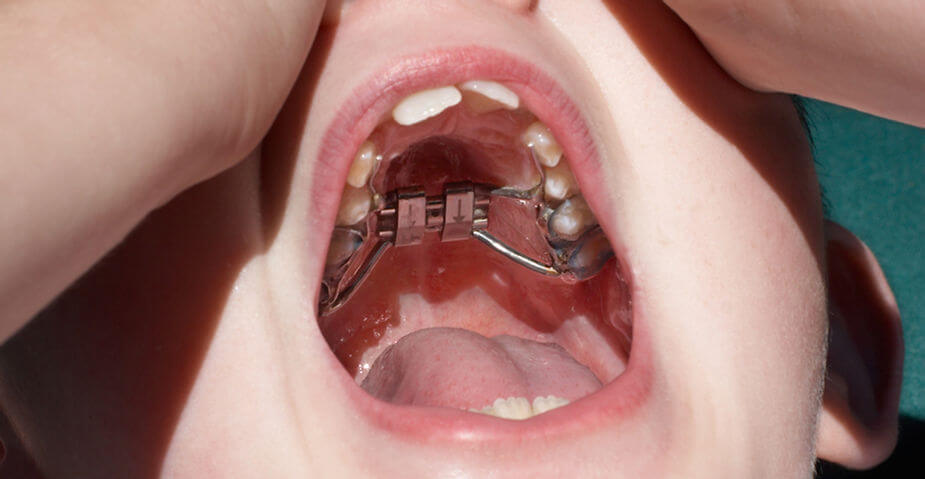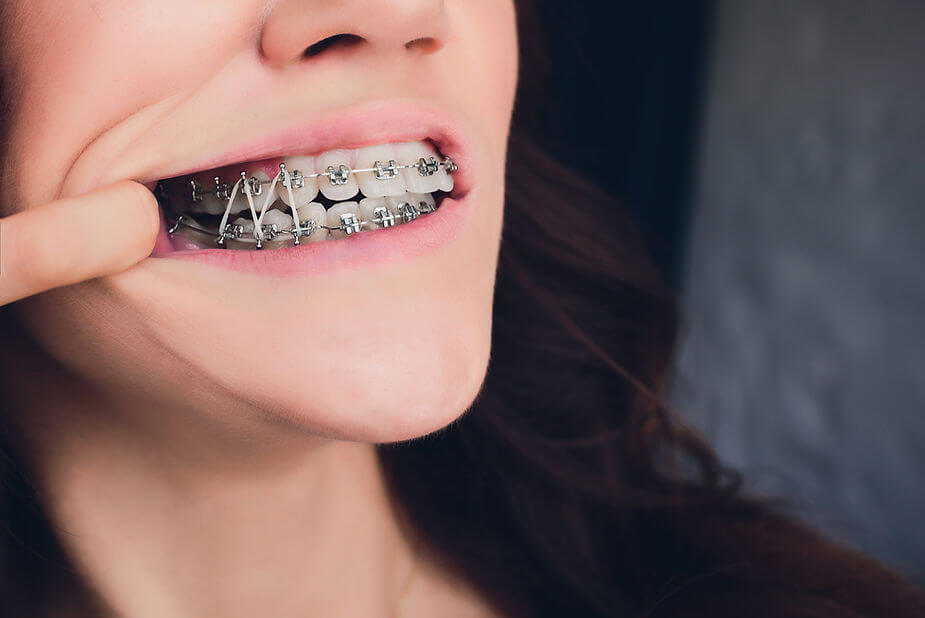You may think that it’s not a big deal when someone in your family snores, but snoring can point to a larger problem, obstructive sleep apnea (OSA). When a person has obstructive sleep apnea, their breathing stops and starts because all or part of their airway gets blocked repeatedly while they are trying to sleep. This leads to disrupted sleep, which can cause many problems, including learning difficulties, behavior disorders, and obesity. Interestingly, many cases of OSA can be treated successfully with orthodontic treatment!

When the upper airway is blocked, the air can’t pass through and you stop breathing for 10 to 30 seconds, or even longer. This causes oxygen levels to drop, which makes your heart rate and blood pressure rise. When this happens, your brain sends a distress signal to breathe, causing you to gasp for air. Unfortunately, this also causes you to partially wake up, disrupting your sleep. People with severe OSA can partially wake over 30 times an hour which means that in eight hours of sleep it can be interrupted over 240 times. Even mild sleep apnea causes 5 to 14 sleep interruptions an hour. Waking so often means that you are not able to get good quality sleep, which can have serious repercussions on your health and well-being.

Common symptoms include snoring, waking up with a dry mouth or headache, choking or gasping in your sleep, night grinding, mouth breathing, chronic nasal congestion, excessive sleepiness, impaired cognitive function, mood changes or disorders, and personality changes. Left untreated, it can cause chronically elevated blood pressure, heart disease, obesity, stroke, and depression (1).
While many of these conditions speak for themselves, if you consider the effects they have on you it is obvious that obstructive sleep apnea can have a huge negative impact on your quality of life. Night grinding can cause headaches. Mouth breathing and nasal congestion lead to chronic upper respiratory illnesses. Impaired cognitive function makes it difficult to concentrate, make minor decisions, learn new things, and remember. Irritability, impatience, frustration, anxiety, and depression, as well as aggression and hyperactivity, are all ways that disrupted sleep and sleep apnea can impact your mood and personality. Strangely, increased motor vehicle accidents are actually listed as a side effect of sleep apnea (1).
OSA impacts far more than just your health. It has been related to a reduced quality of life and impaired relationships between spouses. In an adult, being chronically ill, in pain, and fatigued makes it hard to just make it through your day. Imagine if your constant exhaustion and the bad mood you always seem to be battling could be cured with better quality sleep.
Symptoms in children are similar to those in an adult. Additional signs of obstructive sleep apnea in a child are night sweats, bedwetting, nightmares or night terrors, sleepwalking, learning problems, behavioral issues (2), and difficulty paying attention. Children with severe obstructive sleep apnea have been found to have differences in their brain that impact critical cognitive functions, resulting in lower IQ scores than children without it (3). It makes sense that a tired child who has a hard time focusing or remembering things and is easily frustrated is going to have a difficult time in school. When you add the changes caused in a brain affected by sleep apnea, this poor child will have a definite disadvantage. The good news is that some causes can be treated early, reversing the symptoms and even completely curing sleep apnea! Once sleep apnea is cured, many of the symptoms disappear and your child’s quality of life may be greatly enhanced.

Since somewhere between 2 and 4 percent of children may have OSA, with a majority between 2 to 8 years old, it is important to be aware of the possibility. Obstructive sleep apnea can also be hereditary (4). So, if you suspect that you have it and notice any of the signs or symptoms in your child, it is best to get them treated early. This can significantly improve their long-term health and quality of life.
There are many causes of obstructive sleep apnea, including adenoids, allergies, and obesity. However, the jaw structure can create a narrow palate and narrow airways, causing OSA. Many craniofacial structure problems, including a narrow upper dental arch and an overbite or overjet, are commonly seen in obstructive sleep apnea (5). The good news is that we can reverse or cure these types of structural causes with orthodontic treatment!
At this time, sleep apnea is diagnosed by an ENT or sleep specialist, but as your child’s dental team, we can monitor their facial growth and identify developmental problems that increase their risk of OSA. This is yet another reason that the American Association of Orthodontists recommends that children have their first visit to an orthodontist by age 7. As with any other orthodontic treatment, it is often much easier and requires less time to treat when caught early.
Early orthodontic treatment for OSA includes expanding the upper arch or jaw and modifying the bony structure of the face to open up the airways. Between the ages of 6 and 8, upper and lower jaw expansion is possible because children’s facial bones are still developing. Braces will fix an overbite or overjet and allow us to help guide your child’s jaws into the correct position as they grow. Expanded and correctly positioned jaws can help reduce or cure obstructive sleep apnea.

No matter how old you are, we can provide treatment when obstructive sleep apnea is related to orthodontic issues. When caused by an overbite or overjet, braces can help correct the problem, reducing symptoms of sleep apnea. When your mandible (lower jawbone) is in the wrong position, an appliance can be worn at night to keep it in the correct position. Repositioning your lower jaw also repositions your tongue, soft palate, and uvula, so your airways stay open and unobstructed while you sleep, allowing your body the healing, restful sleep you need.

If these solutions will not work for you, a tongue retaining mouthpiece may help. These have a section that fits around your tongue, keeping it forward so it cannot fall back into your airway. It is important to have your device fitted by an orthodontist, no matter what type of appliance you use. Since everyone’s facial structure is different, an over-the-counter device could actually worsen the problem causing your sleep apnea.
We offer free orthodontic consultations, so if anyone in your family snores or has any other sleep breathing problems we would be privileged to help you discover whether orthodontic treatment could resolve the problem. Since obstructive sleep apnea can have profound negative effects on your health and quality of life, it is important to seek treatment if you display any symptoms. Even if you just feel sleepy all the time, imagine how much easier life would be if you had more energy!

At Jungle Roots Children’s Dentistry & Orthodontics, we strive to provide the highest comprehensive pediatric and orthodontic dental care in a unique, fun-filled environment staffed by a team of caring, energetic professionals. We believe the establishment of a “dental home” at an early age is the key to a lifetime of positive visits to the dentist.
#Arizona#dental#dentalcare#dentist#dentistry#health#JungleRoots#kids#OralHealth#ortho#orthodontics#PediatricDentistry#phoenix#selfcare#sleepapnea#snore#wellbeing#wellness
